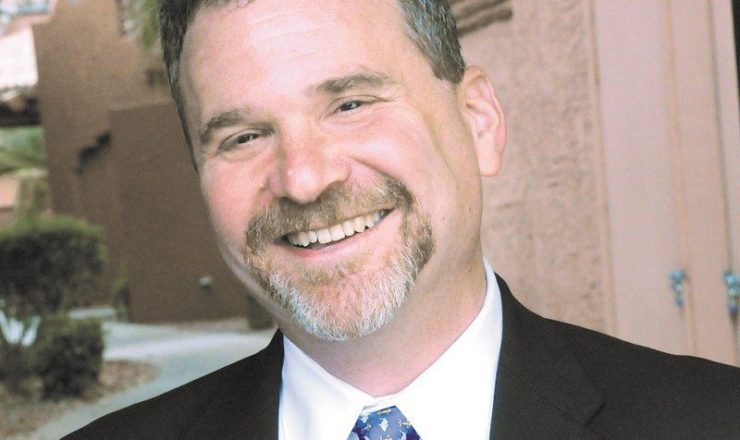Moving away from One-Size-Fits-All Handling of DWI offenders
As chief judge for Minnesota’s Sixth District Court in Duluth, I see a lot of folks who have been arrested for driving while intoxicated (DWI).
We, like most jurisdictions, have historically had a one-size fits all approach to first-offense DWI sentencing. Each person is given nearly the exact same sentence.
Yet we know that not all of those arrested for the same offense present with the same treatment needs. We know that if we miss the mark, whether by mandating more or less intervention than necessary, we can actually make matters worse for people.
The best practice is to assess and respond according to how that individual presents.
We then strive to meet his or her needs/risk. We also know from our data that two out of three first time offenders don’t ever get another DWI. So our questions have been whether we can do more to identify those who are at increased danger of repeating and, if so, can we intervene at this point to change the trajectory? Stated differently, could we create an intervention which would break that cycle for those folks early on, without at the same time over-responding to those who don’t need it?
We were approached by the Minnesota Department of Public Safety to do a demonstration project aimed at right-sizing the approach to these clients. They proposed using the Screening, Brief Intervention and Referral to Treatment (SBIRT) model as an early intervention for people with risky alcohol use.
The SBIRT model consists of Screening to identify people at risk for developing substance use disorders; Brief Intervention to raise awareness of risks and consequences, motivate for change, and help set healthier goals; and Referral to Treatment to aid access to treatment and coordinate service for people with high risk and/or dependence. The assumption is, based on evidence mainly from the medical primary care setting, that screening and brief behavioral counseling on reducing alcohol consumption or adopting safer drinking behaviors will reduce future risks (legal, social, medical) associated with drinking alcohol.
The idea is to conduct a screening of the client’s level of treatment need, provide a quick conversational intervention, and send them on their way. We don’t want to pull them deeper into the system, to over-respond, and we also don’t want to under-respond. This approach would provide a non-threatening conversation around the risky behavior that led to the arrest and refer the highest need clients to assessment/treatment, all potentially preventing future risky behavior.
We created a team of great partners, including the Institute for Clinical Systems Improvement (ICSI), and went to work to create the project. We have now successfully implemented this model in our court. Anyone arrested for a first-time DWI is summoned to court within a few weeks of his or her arrest. (We shortened our historical timeline on the theory that the earlier the intervention following the arrest the better.) Right after going before the judge, s/he meets with an interventionist who walks them through a screening tool that asks about the amount and frequency of drinking alcohol. The interventionist then talks with them about their results. Clients set goals for changing their behavior and are referred to treatment if needed. The interventionist follows up with them about a month later to see how they are doing on those goals and can make a new referral to treatment if needed.
None of the information about the client’s screening and goal-setting is put into his or her court file. It is confidential between him/her and the interventionist. We took the position that there was real value in creating a space where the person and the interventionist could speak freely and allow the client to set his or her own goals. The court knows the process is happening, that the client is being referred when needed, and the interventionist is doing follow up. Confidentiality supports the process.
We don’t know yet the future impact of inserting the SBIRT model into our court process for first-time DWI clients. It’s too early for recidivism data. To date we have done interventions with almost 250 people. The large majority, not surprisingly, fall into the low need category. A small percentage have scored higher need, either harmful or dependent use. Those folks have been referred on to services and our interventionists are following up.
As I said, follow up generally happens about a month after the SBIRT meeting. The client is asked some of the same questions about the amount and frequency of his or her drinking. Folks are reporting that they are changing their behaviors in response to goal setting: drinking less often; drinking less on occasions when they do drink; changing their decision making around alcohol and driving.
There are several things we’ve seen thus far. First, word has spread and we actually have folks coming to court looking forward to talking with an interventionist! They’ve heard about it from friends who viewed it as a positive experience. Second, as surprising as it seems given the level of information available, we see a lot of folks who really need education on alcohol and driving. For example, one client said, “This was amazing. I thought I could have 4 drinks and still drive. This stuff should be taught in high school..." Another, “There’s a normalcy surrounding drinking in Minnesota…. I’m so glad there’s a program in place like this that educates people on their alcohol use. I had no idea how easy it was to get to a .08.”
One client said, “This wasn’t the first time I had driven drunk, but it was the first time I’d been caught. I believe I have a problem, and now I am starting to face it.” Might he have been the one in three likely to reoffend? Could this intervention make a difference in his trajectory? That’s our hope.
You can find our Final Report here for more information.
Judge Floerke is the Chief Judge of the 6th Judicial District of Minnesota, chambered in Duluth. He was appointed to the bench July 2004. Before taking the bench he served as a lead prosecutor, litigation attorney in a private law firm, and as a senior attorney in government civil litigation.
*The views and opinions expressed in this blog are solely those of the author and do not necessarily reflect the views of the Foundation for Advancing Alcohol Responsibility (Responsibility.org) or any Responsibility.org member.*






